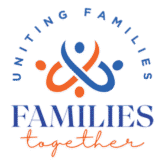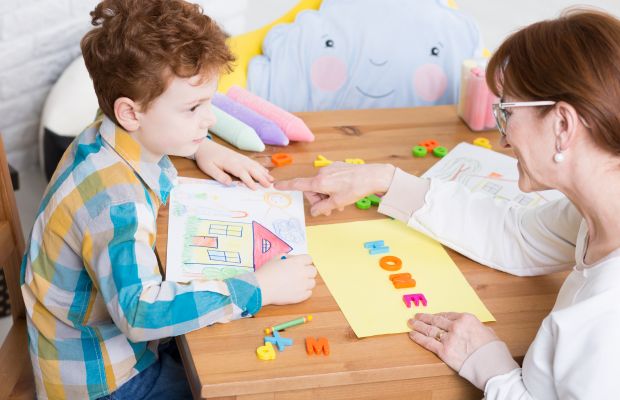When children face emotional or behavioral challenges, it can be distressing for both them and their families. While traditional talk therapy is often associated with adults, a highly effective and evidence-based approach called Cognitive Behavioral Therapy (CBT) has been adapted specifically for children and adolescents. CBT helps children understand the powerful connection between their thoughts, feelings, and behaviors, equipping them with tools to manage difficulties, build resilience, and improve their overall well-being. For parents navigating these waters, understanding CBT is key to supporting their child’s journey toward greater emotional health.
How Cognitive Behavioral Therapy Works for Children
At its core, CBT is a type of talk therapy that is problem-focused and goal-oriented. It operates on the principle that our thoughts influence our emotions, which in turn influence our behaviors. For children, CBT helps them:
- Identify Unhelpful Thoughts: Learn to recognize automatic negative or distorted thoughts that contribute to distress (e.g., “I’m bad at everything,” “No one likes me”).
- Challenge These Thoughts: With the therapist’s guidance, children learn to question the accuracy and helpfulness of these thoughts and consider alternative, more realistic perspectives.
- Understand Emotions: Develop emotional literacy – recognizing and naming feelings, and understanding how they relate to thoughts and bodily sensations.
- Learn Coping Skills: Acquire practical strategies to manage difficult emotions and challenging situations (e.g., relaxation techniques, problem-solving skills).
- Change Behaviors: Practice new, more adaptive behaviors that lead to positive outcomes.
Unlike some therapies that delve deeply into past events, CBT for children typically focuses on current issues and developing skills for the present and future. It’s often time-limited, with a set number of sessions, though this can vary based on the child’s needs. Therapists use age-appropriate methods like play, art, and worksheets to engage children.
Common Issues Addressed Through CBT in Children
CBT has proven effective in treating a wide range of emotional and behavioral challenges in children. Some of the most common issues include:
- Anxiety Disorders: Generalized anxiety, social anxiety, separation anxiety, specific phobias, and obsessive-compulsive disorder (OCD). CBT helps children confront their fears gradually and challenge anxious thoughts.
- Depression: Addressing negative thought patterns, increasing engagement in enjoyable activities, and improving problem-solving skills to combat feelings of sadness and hopelessness.
- ADHD (Attention-Deficit/Hyperactivity Disorder): While not a direct treatment for ADHD, CBT can help manage associated challenges like impulsivity, emotional regulation difficulties, organizational problems, and low self-esteem.
- Trauma (Trauma-Focused CBT): Specifically designed to help children process traumatic experiences, reduce distress, and develop coping skills for PTSD symptoms.
- Behavioral Challenges: Such as anger management issues, oppositional defiant disorder (ODD), and disruptive behaviors, by teaching self-regulation and alternative responses.
- Low Self-Esteem: Helping children challenge self-critical thoughts and build a more positive self-image.
- Sleep Problems: Addressing anxious thoughts or unhelpful routines that interfere with sleep.
Supporting Your Child’s CBT Process at Home
Parental involvement is a critical component of successful CBT for children. While the therapist works directly with your child, reinforcing learned skills and concepts at home significantly enhances progress and helps integrate new behaviors into daily life.
Age-Appropriate CBT Techniques
Therapists adapt CBT techniques to suit a child’s developmental stage. As parents, understanding these adaptations can help you reinforce them.
- Younger Children (e.g., 4-8 years old): CBT often incorporates play therapy, puppets, drawing, games, and simple visual aids. For example, a therapist might use a “thought bubble” drawing to help a child identify a “worry thought.” Parents can continue this at home by asking, “What thought bubble are you having right now?”
- School-Aged Children (e.g., 8-12 years old): Worksheets, simple thought records, stories, and role-playing become more prominent. They might learn about “feeling thermometers” to gauge emotional intensity. Parents can help by regularly checking in using these tools.
- Adolescents (e.g., 13+ years old): CBT becomes more conversational, focusing on thought challenging, problem-solving, and more complex coping strategies. Homework assignments are common, and parents might assist in setting up practice opportunities.
Anxiety Management for Children
If your child is working on anxiety, you can support them by:
- “Thought Detectives”: Encourage your child to identify “worry thoughts” and then act like a detective to find evidence for and against that thought.
- Coping Toolbox: Help your child create a physical or mental “coping toolbox” filled with strategies learned in therapy (e.g., deep breathing, positive affirmations, drawing, listening to music).
- Gradual Exposure Practice: Under the guidance of the therapist, gently support your child in gradually facing situations that trigger their anxiety, celebrating each small step. Avoid rescuing or accommodating anxiety excessively, as this can inadvertently reinforce it.
- Relaxation Techniques: Practice deep breathing, progressive muscle relaxation, or mindfulness exercises together.
Behavioral Change Strategies
For behavioral challenges, consistency and reinforcement are key:
- Connect Thoughts, Feelings, Actions: Help your child understand how a specific thought led to a feeling, which then led to a behavior. “When you thought [negative thought], you felt [emotion], and then you [behavior].”
- Problem-Solving Steps: Work through problems using a structured approach: 1) What’s the problem? 2) What are some solutions? 3) What are the pros and cons of each? 4) Which solution will we try?
- Positive Reinforcement: Consistently praise and reward your child for using new skills or for demonstrating desired behaviors, focusing on effort over perfection.
- Consistent Consequences: Work with the therapist to establish clear, consistent, and logical consequences for unhelpful behaviors.
Family Involvement in Child CBT
Your active participation is crucial for lasting change:
- Communicate with the Therapist: Regularly check in with your child’s therapist to understand the current goals and strategies. Ask for specific ways you can reinforce therapy at home.
- Model CBT Principles: Demonstrate positive coping skills and thought challenging in your own life. Children learn by example.
- Create a Supportive Home Environment: Foster an atmosphere where emotions are openly discussed, and challenges are viewed as opportunities for growth.
- Don’t Be Afraid to Practice: Integrate CBT “homework” or skill practice into daily routines in a low-pressure, engaging way.
- Celebrate Progress: Acknowledge and celebrate every small step forward your child makes. Therapy is a process, and progress may not always be linear.
- Be Patient and Empathetic: Remember that learning new ways of thinking and behaving takes time and effort. Offer understanding and encouragement, especially during setbacks.
Finding a qualified CBT therapist for children in Miami, Florida, can be done through referrals from your pediatrician, school counselors, or by searching online directories of licensed psychologists or clinical social workers who specialize in child and adolescent mental health. Many university-affiliated centers, like those at the University of Miami, also offer specialized CBT programs.
Cognitive Behavioral Therapy empowers children to become active participants in managing their own emotional health. By understanding how CBT works and actively supporting your child’s journey at home, you are providing them with invaluable life skills that will benefit them for years to come. At Families Together FL, we are committed to connecting families with the resources and knowledge needed to support their children’s mental and emotional well-being.

